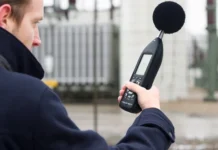Louisiana’s picturesque wetlands, a complex tapestry of swamps, marshes, and bayous, are not only ecologically significant but also culturally iconic. These biologically diverse areas serve as crucial wildlife habitats and natural buffers against hurricanes. However, they face a multitude of environmental threats, among which improper disposal of medical waste is particularly concerning. The challenges of Louisiana medical waste disposal are unique and require targeted strategies to prevent substantial harm to this delicate ecosystem. In this blog post, we will delve into the complexities of managing medical waste in Louisiana’s wetlands, exploring innovative solutions and best practices that can help mitigate environmental risks.
Understanding Medical Waste: Definitions and Dangers
Medical waste, also known as biomedical waste, comprises a variety of materials, including used needles, soiled dressings, surgical gloves, and other items contaminated by bodily fluids. In Louisiana’s wetlands, the humid climate and abundant water bodies can accelerate the degradation of improperly disposed medical waste, leading to the rapid proliferation of pathogens and harmful chemicals. The nature of this waste makes it a potent source of environmental contamination, posing severe risks to both human health and wildlife.
Regulatory Framework: Navigating Louisiana’s Medical Waste Policies
To combat the threats posed by medical waste, Louisiana has established a comprehensive regulatory framework that governs its collection, transportation, treatment, and disposal. These regulations are designed to ensure that medical waste is handled safely and in a manner that minimizes environmental impact. Key aspects of the state’s regulations include stringent licensing requirements for medical waste management companies, mandatory training for personnel, and specific protocols for waste treatment like autoclaving or incineration.
Innovative Disposal Techniques: Safeguarding the Wetlands
In the face of these challenges, innovation in disposal techniques has become crucial. Techniques such as advanced autoclaving, which uses steam sterilization to destroy all microbial life forms in medical waste, and chemical treatment, which neutralizes hazardous components, are being optimized for safety and efficiency. Furthermore, emerging technologies like plasma pyrolysis, which disintegrates waste at extremely high temperatures without combustion, offer promising avenues for reducing environmental impact while ensuring the destruction of pathogens.
Best Practices in Medical Waste Management
Adopting best practices in medical waste management is crucial for minimizing the environmental impact in sensitive areas like Louisiana’s wetlands. These practices include proper segregation, which ensures that hazardous waste does not mix with non-hazardous waste, thereby reducing the volume of waste that requires specialized treatment. Additionally, implementing robust tracking systems enhances accountability, ensuring that every piece of waste is accounted for from generation to final disposal. Resources such as the EPA’s guidelines provide valuable frameworks for states and facilities to model their practices after.
The Role of Technology in Enhancing Disposal Efficiency
Technology plays a pivotal role in enhancing the efficiency and safety of medical waste disposal processes. Automated waste sorting systems, for instance, reduce human contact with hazardous waste and increase the accuracy of waste segregation. Advanced treatment technologies, like the aforementioned plasma pyrolysis, not only ensure thorough waste neutralization but also contribute to the reduction of greenhouse gas emissions compared to traditional incineration methods.
Community Involvement and Education
Community involvement is indispensable in the fight against improper medical waste disposal. Educating local communities, particularly in vulnerable areas around the wetlands, about the risks associated with medical waste and the correct disposal protocols can significantly mitigate risks. Programs aimed at fostering community participation in monitoring and reporting illegal dumping activities are also vital. Resources like the Centers for Disease Control and Prevention (CDC) provide educational materials that can be instrumental in these efforts.
Case Studies: Successful Medical Waste Management Initiatives
Examining case studies where effective medical waste management practices have been implemented can provide valuable lessons for Louisiana. For instance, some coastal states have adopted mobile treatment units that can safely dispose of medical waste at its source, greatly reducing the risk of contamination during transportation. These units are particularly beneficial during emergencies or in rural areas where access to central treatment facilities is limited.
Impact on Public Health and Ecosystems
The improper disposal of medical waste has direct and severe impacts on public health and ecosystems. Pathogens can enter water bodies and soil, posing serious health risks to both humans and wildlife. Chemical contaminants can accumulate in the food chain, leading to long-term ecological damage. Understanding these impacts helps underline the importance of stringent medical waste disposal practices, particularly in ecologically sensitive areas like the wetlands.
Future Directions in Medical Waste Disposal
Looking towards the future, continuous improvement in both technology and regulatory frameworks will be key to addressing the challenges of medical waste disposal. Innovations in biodegradable materials and further advancements in waste treatment technologies could dramatically reduce the environmental footprint of medical waste. Moreover, stronger collaboration between governmental bodies, environmental organizations, and waste management companies will enhance the effectiveness of disposal strategies.
Conclusion: A Call to Action for Sustainable Practices
Louisiana’s wetlands are not only a natural treasure but also a critical buffer against environmental threats. The unique challenges of medical waste disposal in this region demand focused attention and action. By integrating advanced technologies, adhering to strict regulations, and fostering community engagement, Louisiana can protect these vital ecosystems and public health. As stakeholders, it is our collective responsibility to ensure that medical waste disposal practices are as environmentally friendly and effective as possible. Through concerted efforts and sustainable practices, we can safeguard Louisiana’s wetlands for future generations.
This article has delved deep into the subject of medical waste disposal in Louisiana’s wetlands, highlighting the complexity of the issue and the multi-faceted approach needed to tackle it effectively. For more in-depth information and continuous updates on environmental management and waste disposal practices, readers can refer to authoritative sources like the Environmental Protection Agency (EPA) and the World Health Organization (WHO).



































































